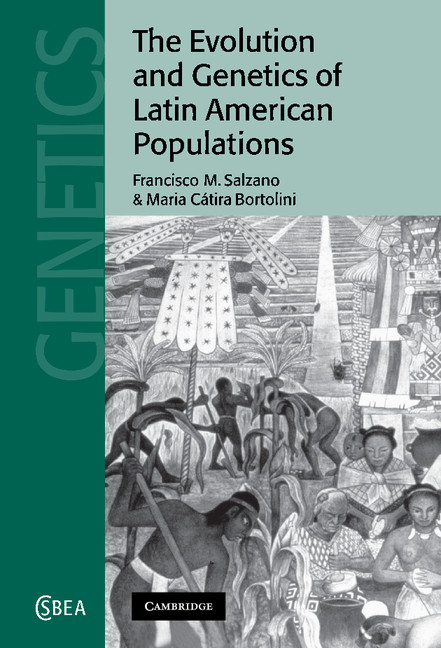Examining ‘Latinidad’ in Latin America: Race, ‘Latinidad’ and the Decolonial OptionPosted in Anthropology, Articles, Caribbean/Latin America, History, Media Archive on 2013-03-10 03:56Z by Steven |
Examining ‘Latinidad’ in Latin America: Race, ‘Latinidad’ and the Decolonial Option
Critical Race and Whiteness Studies
Australian Critical Race and Whiteness Studies Association
Volume 8, Number 2, (2012) Directions and Intersections
11 pages
Eugenia Demuro, Visiting Fellow
School of Language Studies, College of Arts and Social Sciences
Australian National University
This article provides a critical account of the idea of race, conceived of and derived from European colonisers in the New World. The paper argues that race became a crucial category to the colonising projects of the New World, and in particular in the distribution of power during colonialism. The paper further examines how the notion of Latinidad (Latinity), entrenched in the term Latin America, continued to enact a discourse of racial superiority/inferiority even after the battles for Independence had taken place. Employing the critical vocabulary and framework of Decolonial theory, the paper introduces key arguments against Western European universality, and calls for a re-reading of the processes that structure privilege across racial and ethnic lines.
Introduction
Following the conquest and colonisation of the Americas, the concept of race, as a category, became instrumental to social organisation and, significantly, continues to be a powerful stratagem today. This is clearly evident in the idea of Latinidad (Latinity) that underscores the nomenclature ‘Latin America’, which continues to elevate European heritage to the detriment of all other racial or ethnic groups. We can see this, for example, in the fact that whilst an Aymaran Amerindian from Bolivia may not share much with an Afro-Cuban from Santiago, or with a porteño from Buenos Aires, or a Mexican from Tijuana, each is deemed to be Latin American. Given the cultural heterogeneity of the region, it seems imprecise to speak of Latin America as though there were no marked differences between the nations, regions, cultures and peoples of the huge landmass that extends from the south of Río Grande to Tierra del Fuego. It is difficult to employ the term Latin America with any validity for a number of reasons: to reiterate, it is the referent of an incredibly vast and heterogeneous region; additionally, the term emerged as the result of conflicts between imperial nations and was hence applied to the region from outside (see Mignolo 2005); and, most importantly, the very idea of Latinidad functions to define Latin American identity in relation to the European heritages, and erases and marginalises the racial and cultural diversity of people residing in Latin America. For these reasons, the term Latin America and its continued usage must be seen as part of a larger program of coloniality that began with the inception of the Americas as the New World in the 15th century, and that continues today through global, Western capitalism and its accompanying epistemology. In Latin America, the colonial project that began with the arrival of Europeans did not end with the cessation of Spanish and Portuguese colonial rule. In fact, coloniality persists today and is evident in the distribution of wealth and resources across the region and the globe…
…The Emergence of Race
For Europe, the so-called discovery of America opened vast territories to be appropriated, riches to be extracted, and inhabitants to be indoctrinated into European culture and Catholicism. For the indigenous peoples of the New World, the conquest and colonisation meant complete domination, and went hand-in-hand with slavery, serfdom, genocide and the overall destruction of previously existing social formations. It goes without saying that the destruction of culture also meant the destruction of knowledge/s and worldviews that differed from that of the Europeans. The legitimizing discourse of this enterprise, based on the supposed superiority of the European colonisers and the supposed inferiority of the dominated, rested on a newly emergent notion of race.
The classification Indio to refer to the vast numbers of societies and civilisations not only obscured the differences between the groups which inhabited the region, it served as the construction of an identity whose main purpose was to differentiate the indigenous from the colonisers. The term summarised a category that was entirely negative and inferior. The same process was repeated when it came to the people transported as slaves from Africa, although they came from different regions and belonged to different groups—Ashantis, Yorubas, Congos, etc.—in the colonial period they became Negros (Quijano 2000: 551-2). Both Indios and Negros were conceived as inferior identities to their European counterparts, and this inferiority was defined specifically in terms of their race. These identities became configured in asymmetrical relations of power within the new colonial system; they had a corresponding place within the colonial hierarchies, the organisation of labour, and corresponding social roles. Both Indios and Negros existed outside the domain of civilised society, as a repository of labour to be exploited for the advantage of Europeans. Interestingly, race became associated with colour, perhaps as one of the most salient differences of phenotype, and social organisation and privilege can be traced to a gradient of colour: the darker the subject the lesser freedom they exercised and possessed. In this way, the concept of race was instrumental to conquest and colonisation: there is a direct link between the idea of race that emerged at the onset of the conquest of the Americas—and that was later spread around the world—and the division and organisation of labour. From the beginning, the distribution of wealth, power, domination and resources was established in terms of the newly invented categories of identity that the concept of race facilitated—Indio, Negro, Mestizo, Spanish, Portuguese, European. It is difficult to overstate the significance of this emergence of race as a new mode of power, efficiently employed as a means to codify the relationship between the conquerors and the conquered, and to justify the atrocities, and the violence, that the conquest and colonial enterprise entailed…
Read the entire article here.

